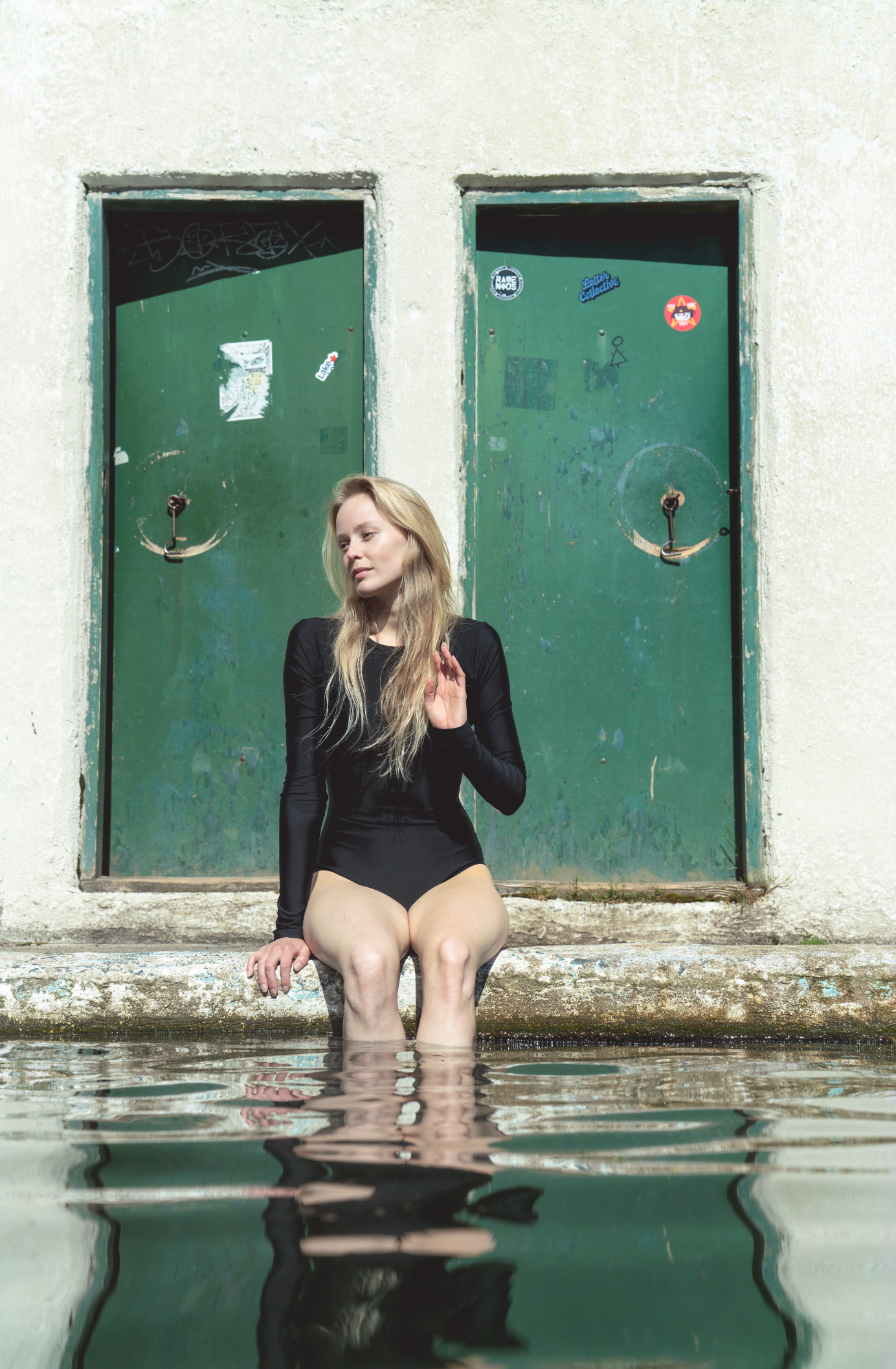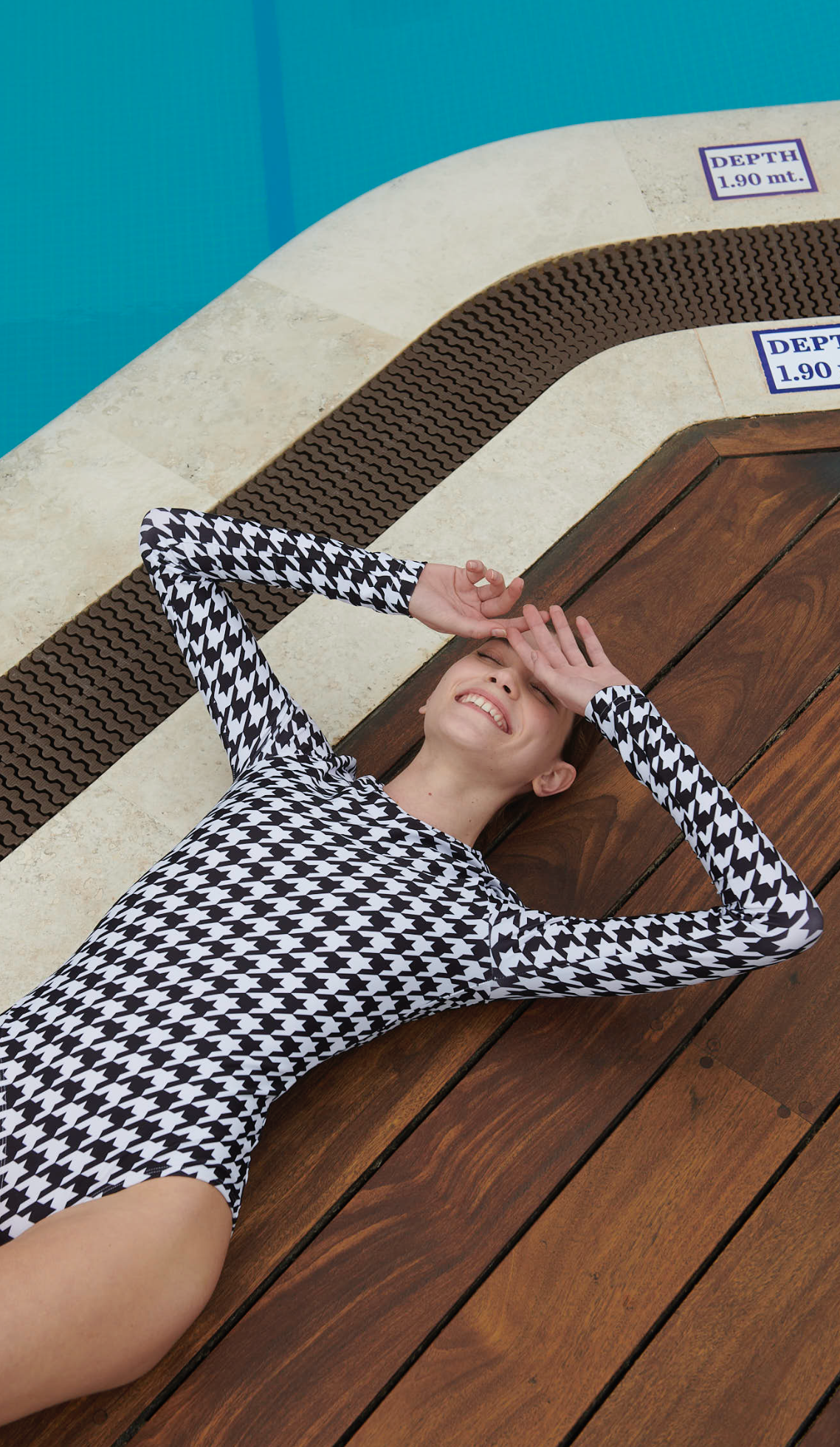Article: The Rise of Designer Swimwear: Merging Fashion with Function

The Rise of Designer Swimwear: Merging Fashion with Function
Designer swimwear has seen a tremendous rise in popularity, blending style and utility like never before. This evolution reflects shifts in consumer preferences and technological advancements in fabric and design. In this blog, we will explore how designer swimwear is changing the beachwear landscape, making it both a fashion statement and a functional choice.
A Brief History of Swimwear Design
Swimwear has come a long way since the days of bulky garments designed primarily for modesty. In the early 1900s, swimwear was characterized by heavy materials and knee-length cuts. However, as society began to embrace swimming as a leisure activity, fashion evolved. By the 1920s, the introduction of lighter fabrics and the two-piece swimsuit started to liberate fashion choices, allowing wearers to express themselves through their beachwear.
As we move through the decades, we see the rise of iconic styles: the bikini in the 1940s, the one-piece with strategic cutouts in the 1980s, and the return of high-waisted designs in recent years. These shifts not only reflected changes in fashion but also in societal attitudes towards body image, leading to a growing acceptance of diverse body types sporting swimwear.
Today, we witness an exciting blend of nostalgia and innovation in swimwear design. Modern designer swimwear often takes inspiration from these past styles while using cutting-edge materials and techniques, leading to functional pieces that also look stunning.
The Influence of Fashion Trends on Swimwear
Fashion is always evolving, and swimwear is no exception. The currents of the fashion industry, influenced by runway trends, pop culture, and celebrity endorsements, have a profound impact on what people choose to wear at the beach or pool. Designers often look to the seasonal collections of high-fashion labels, translating those trends into swimwear that aligns with current aesthetics.
Color palettes, patterns, and styles usually seen on the catwalks infiltrate the swimwear industry, leading to vibrant prints and unique silhouettes. For instance, tropical florals became a hot trend during the summer of 2022, with many designers showcasing this motif on swimsuits that caught the eye of beachgoers.
Moreover, collaborations between fashion designers and swimwear brands have led to innovative designs that merge high fashion with practicality. The prominence of athleisure in the fashion world has also influenced how swimwear is conceptualized, adding performance elements to swimwear without sacrificing style.
Material Innovations: Function Meets Fashion
The intersection of material science and fashion design has taken center stage in the world of swimwear, ushering in a new era of performance-enhancing fabrics. No longer limited to traditional materials, contemporary swimwear utilizes cutting-edge textiles designed for durability, comfort, and style. Fabrics that repel water, resist UV rays, and provide compression are now common in designer pieces.
One notable innovation is the development of eco-friendly materials, such as those made from recycled plastics or sustainable natural fibers. As environmental awareness grows, many designers are committing to sustainable practices, allowing consumers to make fashion choices that are not only stylish but also responsible.
The seamless integration of technology into swimwear design has introduced features like moisture-wicking capabilities, temperature control, and even UV protection. This means that wearers can look great and feel comfortable, whether they are lounging by the pool or diving into the waves.
Ultimately, these innovations allow for the marriage of function and fashion, creating swimwear that meets the demands of active lifestyles while maintaining an aesthetic appeal.
Sustainable Practices in Designer Swimwear
In recent years, sustainability has become a critical topic in fashion, including the realm of swimwear. The industry's response to environmental challenges has led to a growing number of brands prioritizing sustainable practices in their production processes. From the materials used to the manufacturing techniques employed, there's a greater emphasis on minimizing ecological impact.
Many designers are now sourcing materials such as regenerated nylon or recycled polyester, sourced from ocean plastics and discarded fishing nets. Not only do these materials help reduce waste, but they also create high-quality swimwear that's both fashionable and eco-conscious. This shift mirrors a broader consumer demand for transparency and ethical production within the fashion industry.
Furthermore, sustainable practices encompass the entire lifecycle of swimwear. Brands are becoming increasingly aware of how their products are disposed of post-consumer use, with initiatives to implement recycling programs where customers can return old swimwear for proper recycling or upcycling.
This commitment to sustainability not only enhances brand image but also resonates with consumers, driving home the message that fashion doesn't have to come at the expense of the planet.
Body Positivity and Inclusivity in Swimwear Design
The conversation around body positivity has taken hold in recent years, and its impact on swimwear design is profound. The rise of the body positivity movement has encouraged brands to rethink their approach to size offerings and inclusivity in design. No longer satisfied with a one-size-fits-all approach, consumers are demanding a broader range of sizes and styles that cater to all body types.
Many designer swimwear brands are leading the way by expanding their size ranges and showcasing models of diverse body types on runways and advertisements. This not only promotes a sense of representation, but it also sends a powerful message that all bodies are beautiful and deserving of stylish swimwear.
Additionally, swimwear designers are incorporating innovative cuts and adjustable elements in their designs, such as tie sides and adjustable straps, ensuring that their pieces cater to individual comfort and fit preferences. This thoughtful approach to design is helping to dismantle outdated standards of beauty and acceptance in the swimwear market.
Ultimately, the marriage of body positivity and swimwear design is a transformative evolution, fostering an inclusive environment where everyone can find something that reflects their personal style.
Top Designer Brands Leading the Charge
As the popularity of designer swimwear continues to soar, several key players in the fashion industry are recognized for their groundbreaking contributions. Leading the charge are brands that have successfully merged aesthetics with functionality, creating swimwear lines that resonate with consumers. Renowned designers such as Gucci, Prada, and Versace have set high standards, introducing unique prints and luxurious materials that elevate swimwear into a statement category.
Emerging talents are also pushing boundaries, as they bring fresh perspectives to swimwear design. Brands like Solid & Striped and Oséree showcase modern silhouettes and trend-forward designs that attract a younger, fashion-conscious audience. Their collections reflect a commitment to both style and comfort, ensuring that wearers don't have to compromise on either front.
Additionally, swimwear collaborations have become increasingly popular, pairing established luxury brands with swimwear specialists to create limited-edition lines that excite consumers. These collaborations often result in innovative designs that reflect current trends while maintaining a sense of exclusivity.
Choosing the Right Designer Swimwear for Your Needs
In a world brimming with choices, selecting the right designer swimwear can feel overwhelming. Understanding your needs is the first step toward finding the perfect piece that aligns with your personal style and activities. Consider the settings in which you'll be wearing your swimwear. Are you lounging by the beach, engaging in active water sports, or attending a glamorous pool party? Each scenario may call for different styles and features.
Next, focus on fit. Designer swimwear often comes with various cuts and styles, from high-waisted bikinis to sporty one-pieces. Trying on different options is key to finding what flatters your body shape and ensures comfort. Look for key features such as adjustable straps, removable padding, or built-in support that will enhance your experience.
Finally, consider your values when making a purchase. Many designer brands prioritize sustainability and ethical practices, which can make a difference in your decision. Swipe through social media or check online reviews to discover which brands align with your beliefs while delivering on style and functionality.
Embracing the Future of Swimwear
The rise of designer swimwear signifies a remarkable fusion of fashion and function, allowing individuals to express their style while enjoying optimal performance in and out of the water. As this trend continues to thrive, we can expect more innovations that cater to the needs of fashion-conscious consumers.

